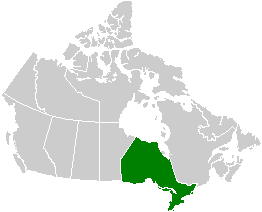Related Research Articles

The Native American Graves Protection and Repatriation Act (NAGPRA), Pub. L. 101-601, 25 U.S.C. 3001 et seq., 104 Stat. 3048, is a United States federal law enacted on November 16, 1990.

The National Environmental Policy Act (NEPA) is a United States environmental law that promotes the enhancement of the environment and established the President's Council on Environmental Quality (CEQ). The law was enacted on January 1, 1970. To date, more than 100 nations around the world have enacted national environmental policies modeled after NEPA.
An environmental impact statement (EIS), under United States environmental law, is a document required by the 1969 National Environmental Policy Act (NEPA) for certain actions "significantly affecting the quality of the human environment". An EIS is a tool for decision making. It describes the positive and negative environmental effects of a proposed action, and it usually also lists one or more alternative actions that may be chosen instead of the action described in the EIS. Several U.S. state governments require that a document similar to an EIS be submitted to the state for certain actions. For example, in California, an Environmental Impact Report (EIR) must be submitted to the state for certain actions, as described in the California Environmental Quality Act (CEQA). One of the primary authors of the act is Lynton K. Caldwell.

The National Historic Preservation Act is legislation intended to preserve historic and archaeological sites in the United States of America. The act created the National Register of Historic Places, the list of National Historic Landmarks, and the State Historic Preservation Offices.

Environmental Impact assessment (EIA) is the assessment of the environmental consequences of a plan, policy, program, or actual projects prior to the decision to move forward with the proposed action. In this context, the term "environmental impact assessment" (EIA) is usually used when applied to actual projects by individuals or companies and the term "strategic environmental assessment" (SEA) applies to policies, plans and programmes most often proposed by organs of state. It is a tool of environmental management forming a part of project approval and decision-making. Environmental assessments may be governed by rules of administrative procedure regarding public participation and documentation of decision making, and may be subject to judicial review.
Archaeological ethics refers to the moral issues raised through the study of the material past. It is a branch of the philosophy of archaeology. This article will touch on human remains, the preservation and laws protecting remains and cultural items, issues around the globe, as well as preservation and ethnoarchaeology.

Cultural heritage management (CHM) is the vocation and practice of managing cultural heritage. It is a branch of cultural resources management (CRM), although it also draws on the practices of cultural conservation, restoration, museology, archaeology, history and architecture. While the term cultural heritage is generally used in Europe, in the USA the term cultural resources is in more general use specifically referring to cultural heritage resources.

The Hindmarsh Island bridge controversy was a 1990s Australian legal and political controversy that involved the clash of local Aboriginal Australian sacred culture and property rights. A proposed bridge to Hindmarsh Island, near Goolwa, South Australia attracted opposition from many local residents, environmental groups and indigenous leaders. In 1994, a group of Ngarrindjeri women elders claimed the site was sacred to them for reasons that could not be revealed. The case attracted much controversy because the issue intersected with broader concerns about Indigenous rights, specifically Aboriginal land rights, in the Australian community at the time, and coincided with the Mabo and Wik High Court cases regarding Native title in Australia.
The Canadian Environmental Assessment Act, 2012 and its regulations established the legislative basis for the federal practice of environmental assessment in most regions of Canada from 2012 to 2019. It was repealed with the coming into force of the Impact Assessment Act on August 28, 2019.

A conservator-restorer is a professional responsible for the preservation of artistic and cultural artifacts, also known as cultural heritage. Conservators possess the expertise to preserve cultural heritage in a way that retains the integrity of the object, building or site, including its historical significance, context and aesthetic or visual aspects. This kind of preservation is done by analyzing and assessing the condition of cultural property, understanding processes and evidence of deterioration, planning collections care or site management strategies that prevent damage, carrying out conservation treatments, and conducting research. A conservator's job is to ensure that the objects in a museum's collection are kept in the best possible condition, as well as to serve the museum's mission to bring art before the public.
Australian heritage laws exist at the national (Commonwealth) level, and at each of Australian Capital Territory, New South Wales, Northern Territory, Queensland, South Australia, Tasmania, Victoria, Western Australia state and territory levels. Generally there are separate laws governing Aboriginal cultural heritage and sacred sites, and historical heritage. State laws also allow heritage to be protected through local government regulations, such as planning schemes, as well.

Indigenous archaeology is a sub-discipline of Western archaeological theory that seeks to engage and empower indigenous people in the preservation of their heritage and to correct perceived inequalities in modern archaeology. It also attempts to incorporate non-material elements of cultures, like oral traditions, into the wider historical narrative. This methodology came out of the global anti-colonial movements of the 1970s and 1980s led by aboriginal and indigenous people in settler-colonial nations, like the United States, Canada, and Australia. Major issues the sub-discipline attempts to address include the repatriation of indigenous remains to their respective peoples, the perceived biases that western archaeology's imperialistic roots have imparted into its modern practices, and the stewardship and preservation of indigenous people's cultures and heritage sites. This has encouraged the development of more collaborative relationships between archaeologists and indigenous people and has increased the involvement of indigenous people in archaeology and its related policies.

The Underwater Archaeology Branch (UAB) of the Naval History & Heritage Command (NHHC) is a unit of the United States Department of the Navy. It was formally founded in 1996 as a consequence of the emerging need to manage, study, conserve, and curate the U.S. Navy's submerged cultural resources.

British Columbia Archaeological Assessment Process: British Columbia has set forth a directive process in order to regulate the development of land by private and government identities, this is known as the Heritage Act. British Columbia holds cultural sites throughout its geography and is home to many famous aboriginal archaeological sites, such as the Kwäday Dän Ts'ìnchi, which was an archaeological site containing a frozen person in British Columbia's Tatshenshini-Alsek Park. British Columbia archaeological sites are held in accordance with both the Heritage Act and the federal Environmental Assessment Act, which regulates the areas where developers can utilize and where the provincial government can build infrastructure. This process has not been put into place to discourage development, but has been put into place to regulate historic cultural sites in order to retain historic areas, sites, ecofacts, and artefacts.

Archaeology and conservation of cultural resources in Ontario fall under the Ministry of Tourism, Culture and Sport. The Province of Ontario has created Acts to insure the protection archaeological and cultural resources. Acts such as the Ontario Heritage Act and Environmental Assessment Act provide the major legal documents that protect heritage and cultural resources. Additionally, Acts such as the Planning Act, the Aggregate Resource Act and the Ontario Cemeteries Act are also implemented when specific triggers occur during archaeological assessments.

Archaeology in Saskatchewan, Canada, is supported by professional and amateur interest, privately funded and not-for-profit organizations, and governmental and citizen co-operation with the primary incentive to encourage archaeological awareness and interest in the heritage that defines the province to this date. The landscape of Saskatchewan hosts substantial prehistoric and historic sites.

The Heritage Conservation Act is a provincial statute which allows for the preservation of cultural heritage properties and areas in the province of New Brunswick, Canada.

Sierra Club v. Babbitt, 15 F. Supp. 2d 1274, is a United States District Court for the Southern District of Alabama case in which the Sierra Club and several other environmental organizations and private citizens challenged the United States Fish and Wildlife Service (FWS). Plaintiffs filed action seeking declaratory injunctive relief regarding two incidental take permits (ITPs) issued by the FWS for the construction of two isolated high-density housing complexes in habitat of the endangered Alabama beach mouse. The District Court ruled that the FWS must reconsider its decision to allow high-density development on the Alabama coastline that might harm the endangered Alabama beach mouse. The District Court found that the FWS violated both the Endangered Species Act (ESA) and the National Environmental Policy Act (NEPA) by permitting construction on the dwindling beach mouse habitat.

The conservation and restoration of archaeological sites is the collaborative effort between archaeologists, conservators, and visitors to preserve an archaeological site, and if deemed appropriate, to restore it to its previous state. Considerations about aesthetic, historic, scientific, religious, symbolic, educational, economic, and ecological values all need to be assessed prior to deciding the methods of conservation or needs for restoration. The process of archaeology is essentially destructive, as excavation permanently changes the nature and context of the site and the associated information. Therefore, archaeologists and conservators have an ethical responsibility to care for and conserve the sites they put at risk.
References
- 1 2 3 4 5 6 "The Heritage Resources Act, C.C.S.M. c. H39.1". Government of Manitoba. 1985. Retrieved 2 April 2012.
- 1 2 "Canada-Manitoba Agreement for Environmental Assessment Harmonization". Canadian Environmental Assessment Agency. 1994. Retrieved 2 April 2012.
- ↑ "Draft Canada - Manitoba Agreement on Environmental Assessment Cooperation". Canadian Environmental Assessment Agency. 2005. Retrieved 2 April 2012.
- 1 2 "Frequently Asked Questions". Canadian Environmental Assessment Agency. 7 February 2012. Retrieved 2 April 2012.
- 1 2 3 4 5 6 7 8 9 "Human Rights Museum mistreating First Nations heritage: archeologist". CBC News. 16 June 2009. Retrieved 2 April 2012.